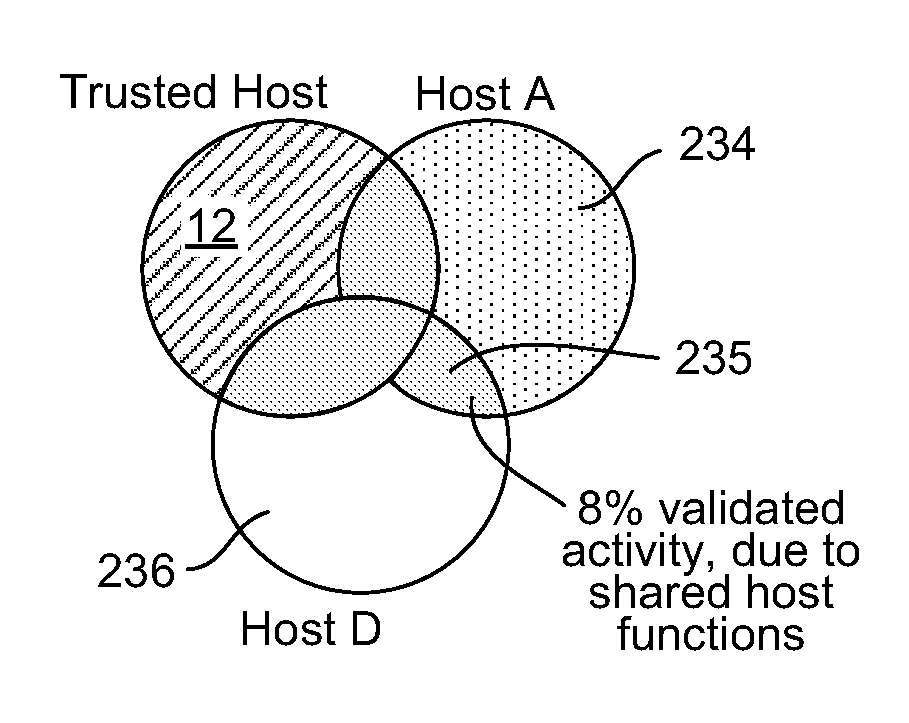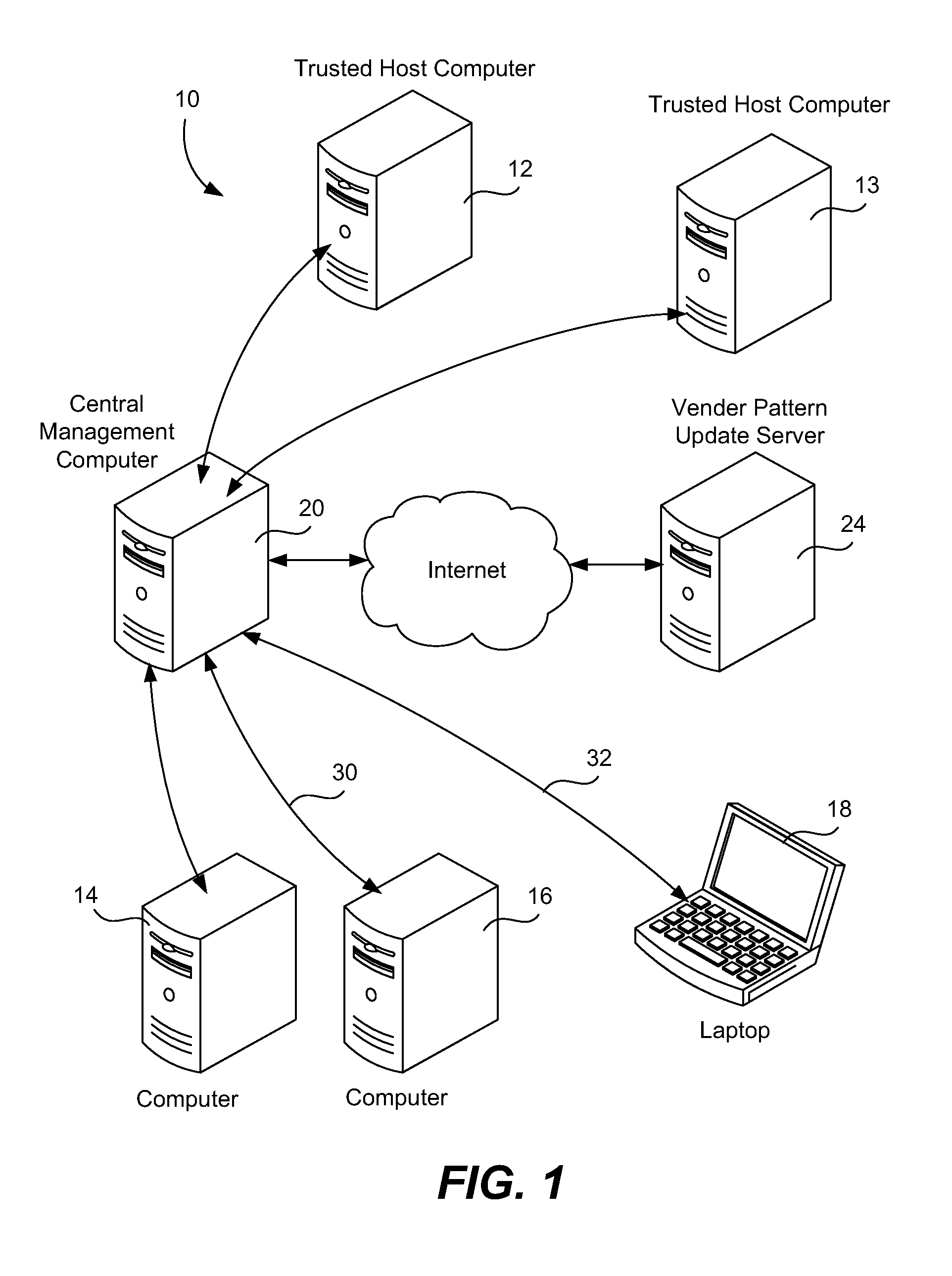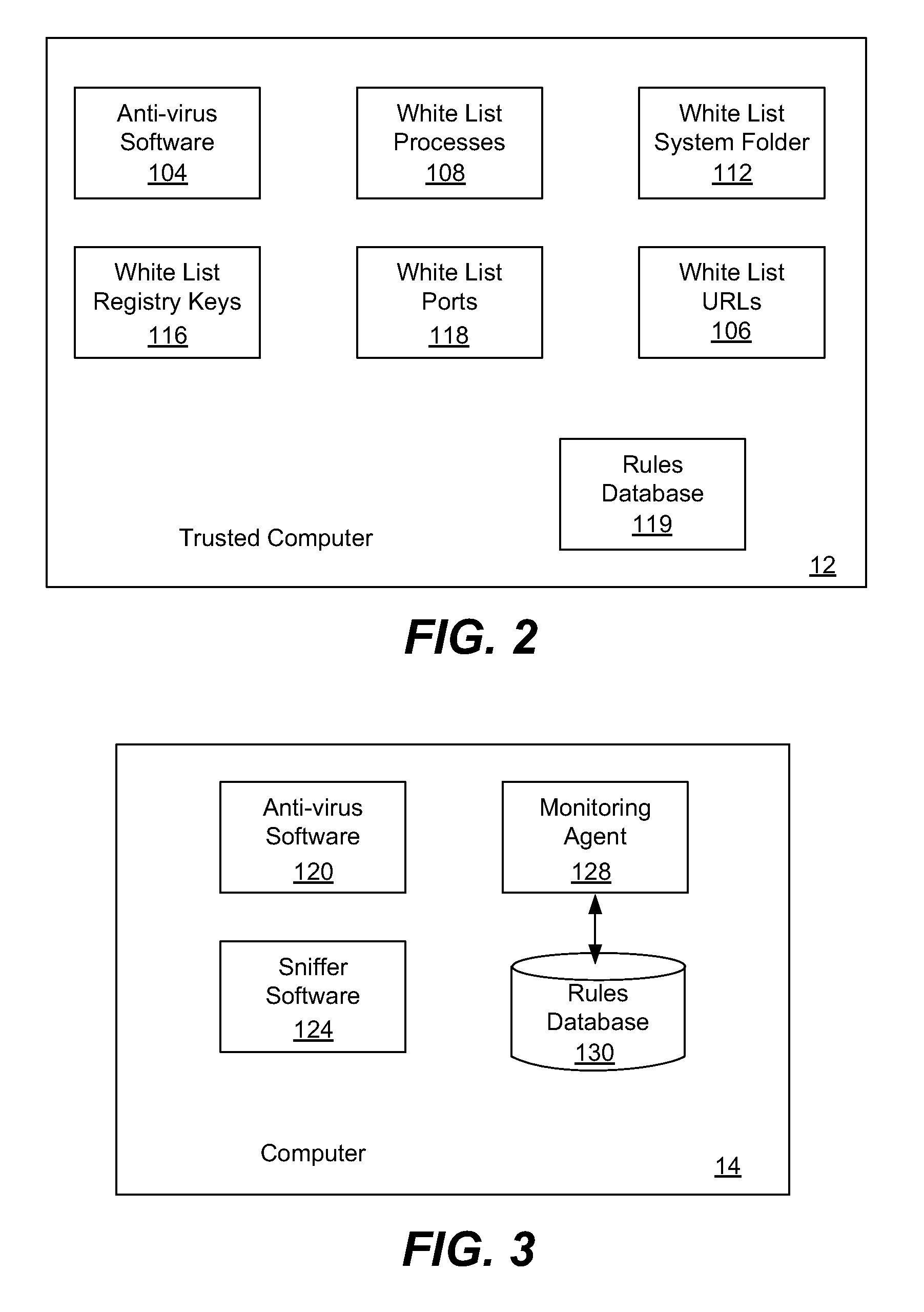Early malware detection by cross-referencing host data
- Summary
- Abstract
- Description
- Claims
- Application Information
AI Technical Summary
Benefits of technology
Problems solved by technology
Method used
Image
Examples
Embodiment Construction
[0027]The basic idea is that a computer system will include a known, trusted computer host against which cross-referencing can be performed. There are a variety of specific features and behaviors that can be used for measurement and other computers in the system can be compared against the trusted host to see what percentage of features or behaviors differ from the trusted host. Features and behaviors that are unknown, undetected or otherwise odd are flagged. Further, the percentage of features and behaviors of a suspect computer that do not match with the trusted host can be compared against percentages of other computers in the system. When there is an aberrant feature or unknown behavior on a computer, this information can be used to analyze the threat and to lower the rate of false positives when detecting zero-day attacks.
[0028]Features and behaviors on one computer that differ from the trusted host can be correlated across other computers in the system to find a trend. Or, fea...
PUM
 Login to View More
Login to View More Abstract
Description
Claims
Application Information
 Login to View More
Login to View More - R&D
- Intellectual Property
- Life Sciences
- Materials
- Tech Scout
- Unparalleled Data Quality
- Higher Quality Content
- 60% Fewer Hallucinations
Browse by: Latest US Patents, China's latest patents, Technical Efficacy Thesaurus, Application Domain, Technology Topic, Popular Technical Reports.
© 2025 PatSnap. All rights reserved.Legal|Privacy policy|Modern Slavery Act Transparency Statement|Sitemap|About US| Contact US: help@patsnap.com



